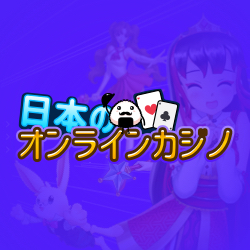Dragoneer’s Aria PSP Review
Dragons in games are generally there for you to slay, of course there are exceptions, such as Drakengard and Panzer Dragoon, where the scaly beasts are friendly. Getting to the point, we can now add Dragonner’s Aria From Hitmaker (crafters of the underrated Blade Dancer: Lineage of Light) to umm…both lists.
Dragoneer’s Aria stars the girly Valen, who is actually a man (his character design consists of a braided ponytail and soft facial features) and as a Dragoon, he is also the protector of the six dragons, who themselves are the guardians of the world, so obviously friendly types, those. Soon things go rather awry, when the evil black dragon, Nidhogg is awakened, he’s obviously there for you to slay that one. This story whilst not exactly brimming with imagination, moves along at a brisk pace and manages to stay relatively engaging throughout.
The main cast is flimsy in number, with just three other characters besides Valen making up your party. They’re all pretty conventional for the genre, with green haired Euphe we have the cheerful heroine, whilst Mary is the usual annoying child character and also fancy’s herself as a bit of a pirate, lastly we have Ruslan the loner character, who is also an elf. As stereotypical, as they are, there’s still some likable humour involving them, especially in regard to Valen’s girly looks.
The game has much in common with the developers previous PSP offering, Blade Dancer, so obviously if you had a good time with that one, the same will apply for Dragoneer’s Aria.
Enemies are still visible wandering the maps and here their difficulty is determined by their size. The combat system, whilst similar, does have its key differences to Blade Dancer. Magic and abilities are still powered by a gauge, though enemies no longer draw from it.
Similar to the Materia system of the legendary Final Fantasy VII, Dargoneers Aria’s features “Lusces”, jewels that can be attached to equipped accessories, granting you lovely magical abilities. Using Lusces and other abilities in combat will power them up, meaning the more you use them the stronger they’ll become, which for me, brings forth pleasant memories of the stunning Grandia, though I’m sure for others, it will induce not so good memories of Final Fantasy II. Admittedly this powering up method does have its flaws as you’re simply not going to use some magic as often as you are others (the resurrection spell is a fine example, as you obviously need dead characters to cast it on) which of course means that certain spells will remain pitifully weak, but overall it’s a pleasing method of growing the characters. I also should probably point out that you needn’t worry, as it doesn’t feature anywhere near the stupidity of Final Fantasy II’s system, which required characters to be attacked, just to raise their health, resulting in needless balance issues, not so here thankfully.
The crafting is retained from Blade Dancer and remains as an enthralling diversion for the more diehard of RPG fans, as well as a cheaper method of gaining equipment. Potentially you could spend almost as long playing around with this as slaying beasties and opening chests.
Like Blade Dancer before it, your progression through Dragoneer’s Aria won’t always be smooth and rapid. Battles are rather plodding and old fashioned and at times, you’ll have to stop back for some level grinding, which to many will be an instant turnoff, but to a certain type will be a compulsive way to spend some time.
Dragoneer’s Aria is essentially a finer honed version of Blade Dancer, that lacks many of the flawed facets of that game. If you hated Blade Dancer, you’ll likewise hate this, but it you loved it, you’ll more than likely cherish this all the more.
8/10







